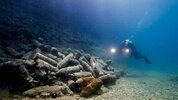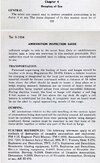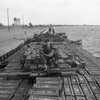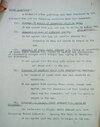British Ordnance Collectors Network
You are using an out of date browser. It may not display this or other websites correctly.
You should upgrade or use an alternative browser.
You should upgrade or use an alternative browser.
Dumping at sea
- Thread starter MINENAZ16
- Start date
The sea dumping of chemical weapons was likely still taking place up to 1985!
Large scale dumping of surplus chemical shell at sea was authorised just after WWI hostilities ceased. A report of the Sub-Committee on the Disposal of Surplus Filled Chemical Shell addressed recycling of chemicals for peaceful purposes, but leaky, damaged and illegibly-marked shell were cleared for sea-dumping as the attached page from the report shows:
Attachments
AE501 told me of many dumping expeditions he did over his career, he had to inspect little john rounds, good ones went to India, bad ones went to Irish sea, i use the location very roughly.
I got this link about the German government
who wants to clear the bottom of the Baltic sea from 16 million tons of ammunition.
Calculated costs:
100 milion Euro per 50 tons (that's two million per ton), and they want to dispose of 16.000.000 tons. so it's going to cost a whopping 32.000.000.000.000 euro's , Speak out; tirtytwo trillion euro's., According to the internet WW2 only cost 4 trillion, so that's a bargain.
There are days I do not have that money in my bank account..
I think it would even be cheaper to build a dam between gotenberg and skagen and temporary drain the oostzee to work from land.
who wants to clear the bottom of the Baltic sea from 16 million tons of ammunition.
Calculated costs:
100 milion Euro per 50 tons (that's two million per ton), and they want to dispose of 16.000.000 tons. so it's going to cost a whopping 32.000.000.000.000 euro's , Speak out; tirtytwo trillion euro's., According to the internet WW2 only cost 4 trillion, so that's a bargain.
There are days I do not have that money in my bank account..
I think it would even be cheaper to build a dam between gotenberg and skagen and temporary drain the oostzee to work from land.
Last edited:
microplastic
Well-Known Member
A major problem is that the ammunition was not only unloaded at the intended location, but also on the access roads due to time constraints. This significantly increases the area contaminated with ammunition. This makes it very expensive if, for example, underwater cables have to be laid.
Another problem is that the incendiary ammunition rusts through and white phosphor is washed onto the beach. This is often confused with amber, which has led to many accidents (spontaneous combustion).
That's why there are warning notices on the affected beaches
Another problem is that the incendiary ammunition rusts through and white phosphor is washed onto the beach. This is often confused with amber, which has led to many accidents (spontaneous combustion).
That's why there are warning notices on the affected beaches
In addition to this pollution at sea, in France all lacs an rivers are filled with ordnance (
)
Switzerland did the same in its beautiful lakes (https://www.tdg.ch/munitions-dans-les-lacs-une-histoire-invisible-497882387551)

Switzerland did the same in its beautiful lakes (https://www.tdg.ch/munitions-dans-les-lacs-une-histoire-invisible-497882387551)

Last edited:
Or maybe not! As part of the Gulf War clear-up in 1993 a colleague who was based in Germany was detailed to sail back to Europe on a ship loaded with 8 Inch HE that had not been needed in training or operations. These shell were sea dumped, no doubt in a specified location. The propelling charges were burned in the Saudi desert, day after day, for maybe two months.
instructions for Italian fishermen



